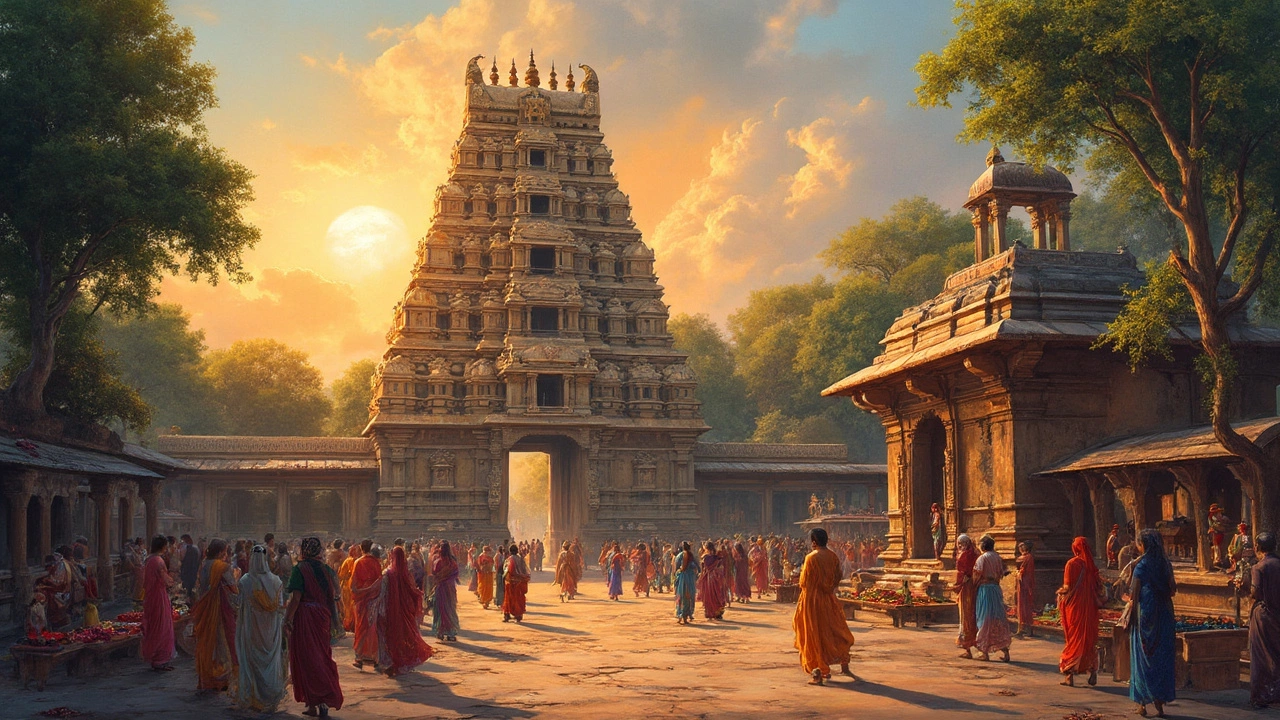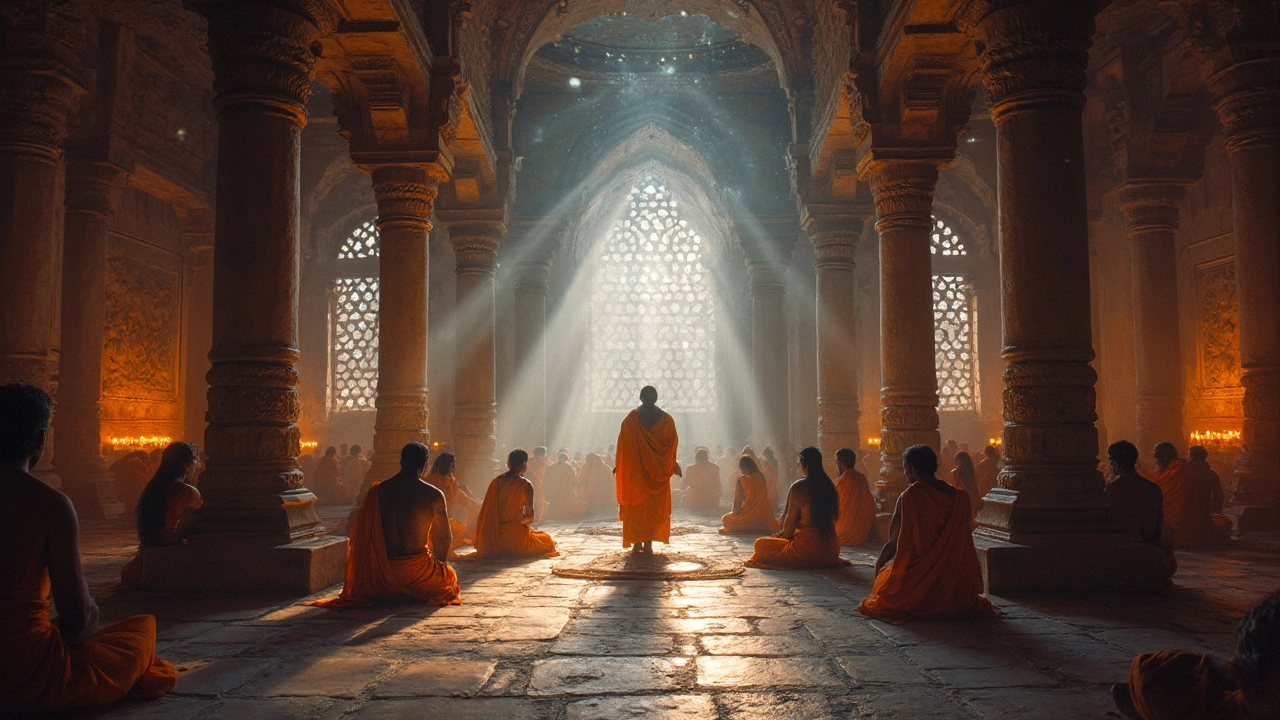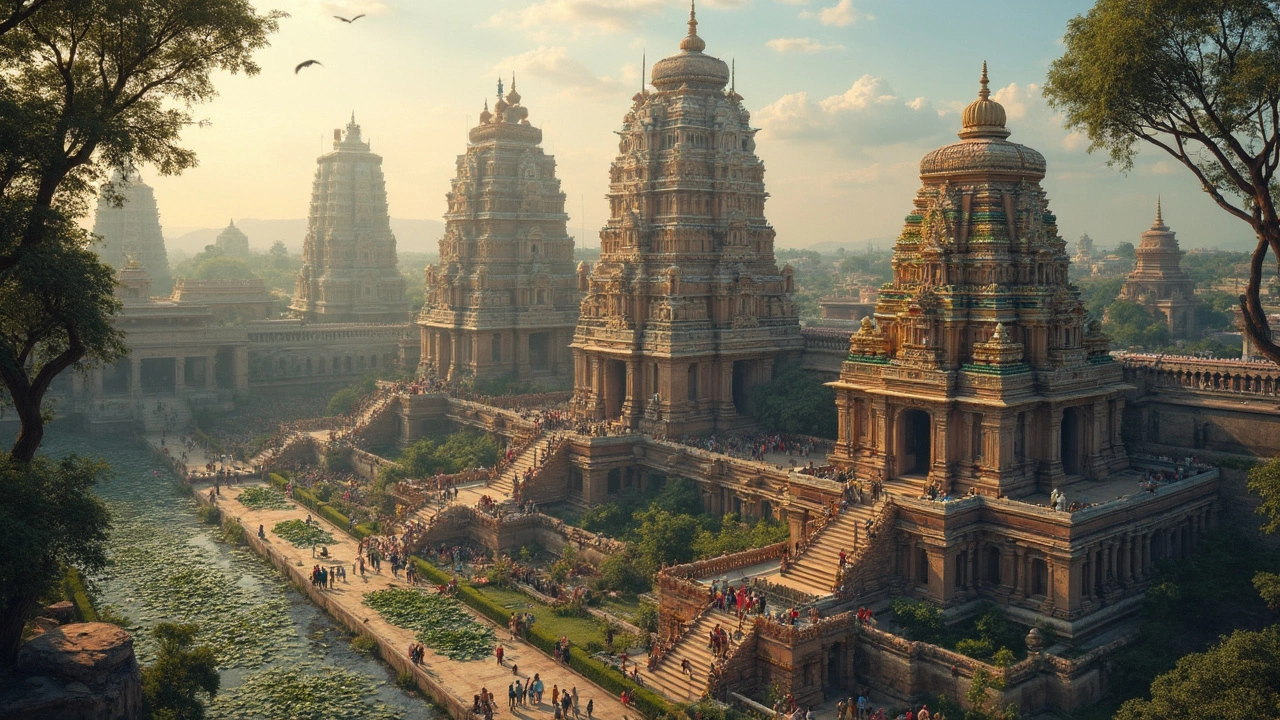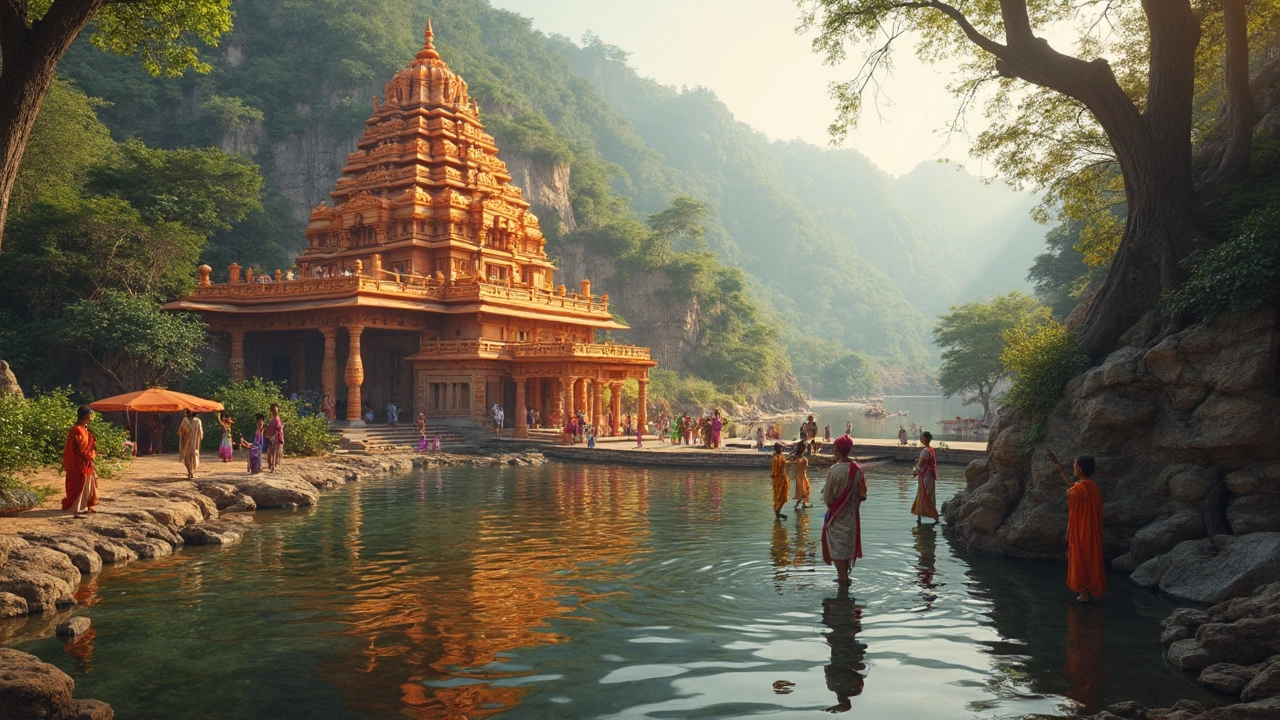Exploring the Origins: God's First Temple in India

Think about temples in India and you're probably imagining grand towers and intricate carvings. Yet, among these marvels lies what many hold as God's first temple, hidden in layers of history and myth. Some say it's more than just stone and structure; it's a gateway into the spiritual heartbeat of past centuries.
The story of this temple isn't merely about religion. It's about a melting pot of culture, art, and devotion. How did this sacred place come to be? Why does it still captivate pilgrims and tourists alike? If you're planning a temple tour in India, knowing about these origins can enrich your journey tenfold.
What's even more fascinating is how these temples were designed. Not just built to last, but crafted to evoke spirituality within those who visit. Picture beautifully carved pillars and awe-inspiring domes. Each piece of architecture tells a deeper story beyond what meets the eye.
- Introduction to Sacred Origins
- Historical Context and Significance
- Architectural Marvels
- Spiritual Traditions and Practices
- Visiting Tips and Local Insights
Introduction to Sacred Origins
The journey into the history of God's first temple in India is both fascinating and mystifying. Believed to be one of the earliest divine abodes, this temple is more than just an ancient structure—it's a testament to faith and devotion that has stood the test of time. So, where did it all start?
Historical records whisper about the sanctuary's origins dating back to times when oral tradition was the main conveyor of knowledge. This encapsulates a mystical era where spirituality intertwined with everyday life, forming the crux of Indian civilization as we know it today.
The Ancient Location
Where is this place, you ask? Most scholars point towards temples in South India, particularly Tamil Nadu, as the starting point of these sacred temples. There's something remarkably serene about these locations, surrounded by lush landscapes and age-old practices.
One such famed site is the Thillai Nataraja Temple in Chidambaram, known for its profound connection to the cosmos and dedicated to Lord Shiva—the divine dancer. This isn't just a place of worship; it's a center for art and culture, reflecting the opulence of the Chola dynasty.
Mythology and Beliefs
The legends surrounding these temples contribute significantly to their allure. Some believe these were not only constructed by humans but inspired by the gods themselves. Imagine tales of deities choosing these sacred spots to descend and bless their followers.
These myths, along with artistic masterpieces found on temple walls, offer glimpses into ancient narratives that have shaped faith systems for centuries. It's like reading a storybook carved in stone.
Take time to explore the stories these temples tell, and you'll soon realize that they're not just holy sites— they're vibrant tales of a culture deeply rooted in devotion.
Historical Context and Significance
Diving into the origins of what some consider God's first temple in India is like uncovering a treasure trove of history. It takes us back to ancient times when spirituality and faith formed the cornerstone of civilization. Temples weren't just places of worship; they were community hubs and centers of learning.
The Birth of a Sacred Space
Deep in India's past, during what historians call the Vedic era, the concept of building temples began to take root. These structures were a new way of connecting with the divine, transitioning from open-air altars under the sky to enclosed spaces rich with symbolism.
Interestingly, what many attribute as God's first temple, according to local legends and some historical records, revolves around the sacred site of the Virupaksha Temple in Hampi. This revered site reportedly dates back to the 7th century, though its roots might stretch even further.
Architectural Innovation and Cultural Flourish
What's remarkable is how temple architecture isn't just about the physical. The style and design of these ancient edifices provide a window into the artistic and technological advances of their time. The temples reflect a unique blend of Dravidian and other regional styles, inspiring much of South India's later temple architecture.
These structures also played a significant role in the economy and social structure of their surroundings. As centers of festivals and gatherings, the temples contributed to local trade, arts, and education.
Through its lush carvings and grand designs, this historical site tells tales of ancient legends and epic narratives etched in stone. As we explore further, the intricacies of its significance become even more apparent, shedding light on how it shaped spiritual practices over the ages.

Architectural Marvels
When we talk about India's ancient temples, we're talking about the cream of the crop of architectural marvels. These are places where art and spirituality collide in the most beautiful way. The details in the carvings, the layout of the complex, the symmetry—it all serves a purpose beyond just looking pretty.
Take the Kailasa temple at Ellora, for instance. Carved out of a single rock, it’s like someone took sculpting to superhero levels. You walk in and are immediately hit with the scale of devotion and craftsmanship. Historians often wonder how this was even possible with the tools of that time.
Then there's the Brihadeshwara Temple, an icon of the Chola dynasty's might and architectural skill. It has a Vimana (temple tower) that clocks in at about 216 feet high. But here's the kicker—it's made entirely from granite, a feat that leaves modern engineers scratching their heads.
And let's not forget the temple from our earlier mention—the temple of Brahma in Pushkar. While its architectural style might not scream grandeur, it's unique because it's one of the very few Brahma temples you’ll find in India. That in itself speaks volumes.
Temple tours in India aren't complete without diving deep into these designs. Look for sculptures depicting mythological stories or the ways natural light illuminates the sacred spaces. These aren't just buildings; they’re invites into a different era.
Modern Insights
Today, architects often study these ancient designs to understand how to blend function with aesthetics. There's a growing interest in rediscovering these techniques, especially as sustainable architecture becomes more popular. The use of natural materials, the strategic positioning for ventilation—all of these elements are lessons modern buildings can learn from.
Spiritual Traditions and Practices
When stepping into what many believe to be God's first temple in India, you're not just visiting a place but experiencing a living tradition. The spiritual practices here are deeply woven into the fabric of daily life, offering a rich tapestry of rituals, chants, and meditations.
The Power of Mantras
Mantras play a central role in spiritual traditions at this sacred site. It's common to hear the rhythmic chanting reverberating through the halls, bringing a sense of peace and meditation. Regular chanting sessions are held, and visitors can join in to connect with the vibrations of centuries past.
Ritual Offerings and Prayer
Everyday rituals, known as 'pujas,' are conducted with offerings of flowers, fruits, and incense. These offerings symbolize surrender and devotion, inviting blessings from the divine. Observing or participating in a puja can be a transformative experience, allowing you to tap into a stream of spirituality that's been flowing for generations.
Festivals and Celebrations
Throughout the year, the temple hosts various festivals, bursting with colors, music, and joy. The most significant ones attract thousands of devotees and tourists. Engaging in these festivals not only offers a peek into vibrant cultural expressions but also showcases the community's unwavering devotion.
Value of Meditation and Reflection
Aside from the external rituals, meditation plays a huge role here. Pilgrims and spiritual seekers often take time to sit in quiet contemplation, absorbing the energy of the place. This practice of reflection helps in gaining a deeper understanding of oneself and the divine.
The spiritual traditions at God's first temple offer an incredible glimpse into the living heart of ancient beliefs. Whether you're a spiritual seeker or just curious, delving into these practices can enrich your visit with wisdom and tranquility.

Visiting Tips and Local Insights
Planning a visit to what some call God's first temple in India can be one of the most enlightening experiences, but a smooth trip requires some insider knowledge. From timing your visit to respecting local customs, here’s what you need to know.
Best Time to Visit
While the temple is awe-inspiring year-round, the best time is generally October to March. The weather's cooler, making it easier to handle long walks and exploring. Avoid the monsoon months if you don’t want to get drenched.
What to Wear
Respecting local customs is crucial. Dress modestly—both men and women should cover their shoulders and knees. Consider lightweight cotton fabrics, especially in warmer months. Don't forget a hat or sunscreen for sunny days.
Getting There
- Nearest Airport: Look for flights to major cities like Chennai or Bangalore, then take a regional bus or train.
- Public Transport: Buses are frequent but can get crowded. Trains offer a more comfortable scenic route.
- Cabs and Rickshaws: For local travel, cabs or auto-rickshaws are your best bet. Negotiate the fare upfront to avoid surprises.
Cultural Etiquette
When you finally reach the temple, you'll notice a serene atmosphere. Photography might be restricted, so check local guidelines. Also, remove your shoes before entering the temple premises. Joining a guide-led tour can provide deeper insights into the temple's history and rituals.
Local Delicacies
Your trip wouldn’t be complete without tasting local cuisines. Look out for eateries offering authentic South Indian dishes like dosa and sambar. They'll fuel you through your temple tour!
Not only will these tips make your trip memorable, but they’ll also help you appreciate the intricate details and stories behind these stunning historical temples. And who knows? You might just find a story that stays with you long after your visit.
